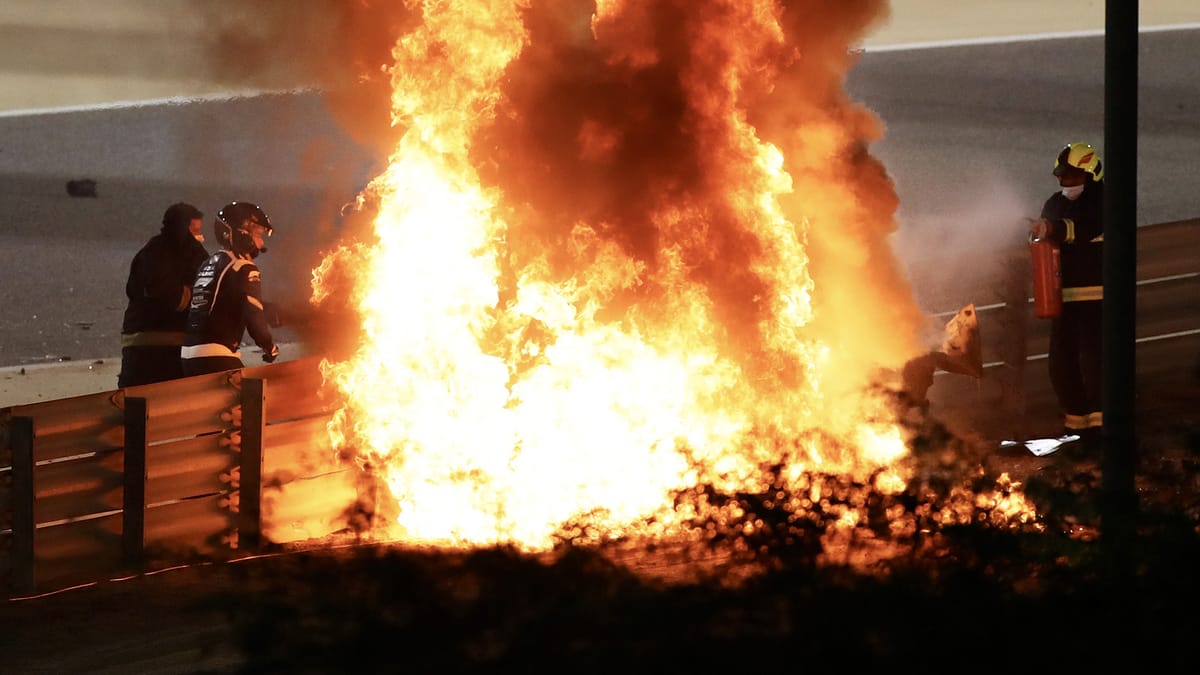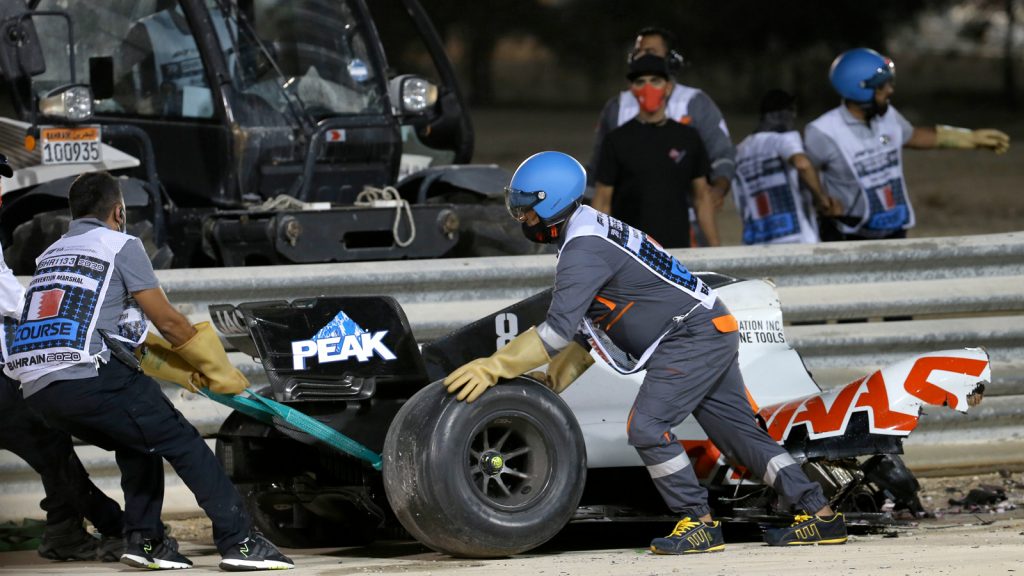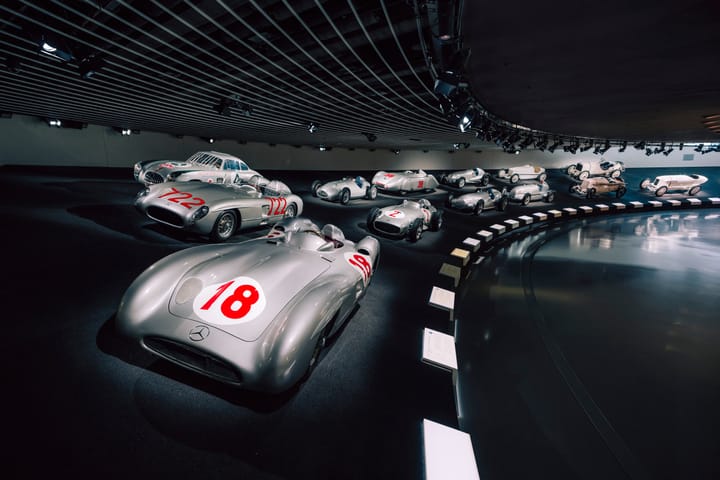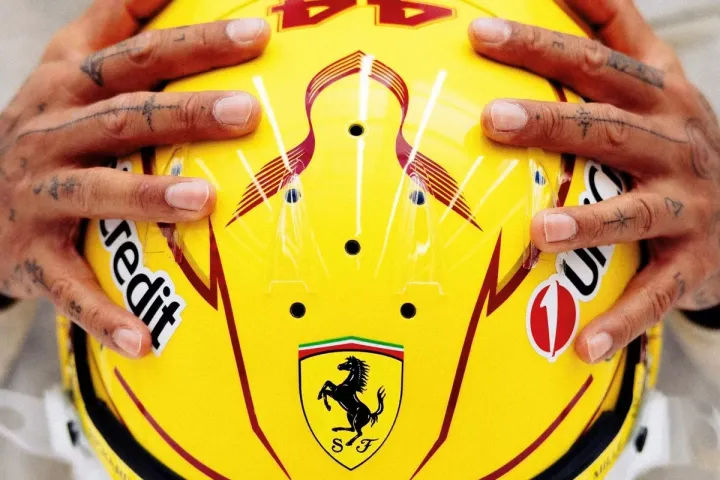Technology Saved Grosjean

Romain Grosjean’s accident on the first lap of the Bahrain Grand Prix shown that Formula 1 is still not completely safe while, at the same time, shown what remarkable progress has been made with Grand Prix safety.
Without the halo device, it is clear that Grosjean would have been killed in the accident, when his car went through the three-tier steel barriers.
The roll-hoop and the halo on his Haas both did their job protecting the driver from an impact that measured 56G.
Such were the forces involved that the halo appears to have cut part-way through the steel rail.
The front of the carbon-fibre chassis was broken just ahead of the cockpit but fortunately there was very little displacement which meant that the Frenchman did not suffer any leg injuries.
Even so, it was noticeable that when he emerged from the fire, aided by FIA Medical Delegate Dr Ian Roberts, Grosjean was missing one of his racing boots.
He was in the inferno for 28 seconds but his only injury was second-degree burns to the back of each hand and there has been speculation that these burns were caused by making contact with the barriers as he was escaping, rather than when he was in the car.
There will be a full FIA investigation into the accident – as happens in with all major crashes – with the Safety Department looking at exactly what happened and what can be learned from the incident.
“What we saw today is a testament to the ongoing pursuit of safety in all areas,” said Michael Masi, the F1 Race Director.
“The process will continue. You learn each and very time. From the bits and pieces I have seen, everything did what it was supposed to do, but I haven’t looked in any great detail at this point. It was a great display of everyone working together very quickly, knowing what their roles are and getting in and doing it. A credit to everyone involved.”
The forces involved in the crash were extreme and the angle of impact was highly unusual. There are limits to what can be done in such circumstances as a tyre barrier would perhaps have deflected the car back on to the race track, while a slightly different angle of impact would have resulted in the car sliding along the barrier, rather than going through it.
Although the fire appeared to be huge, it is unlikely that all the fuel in the car ignited and there was speculation that the fire was probably ignited by the hybrid battery which probably exploded in the impact.
The rear end of the car, behind the fuel cell, was torn off and remained on the track.
The two front wheels were also both ripped off by the forces involved and the compulsory tethers could not restrain the wheels.
The speedy arrival of the Medical Car and the actions of Dr Roberts and Medical Car driver Alan Van der Merwe played an important role, with Roberts instructing a fire marshal to direct his extinguisher in a direction that allowed him to go into the fire to help Grosjean get out.
Van der Merwe’s first action was to use an extinguisher on Roberts and the driver, to ensure that they were not burned.
“It was red with flame and you could see him trying to get himself out. He was gradually getting further out, but it was a question of how do we get to him,” Dr Roberts said.
“There was a fire marshal pretty rapidly on scene and the extinguisher powder pushed the flames back enough. Once Romain was high enough we could get him over the barriers and away, but it was a very small window. As soon as the extinguisher powder moved the flames were coming back. It would have been daft to go in there with the flames coming towards me, so that extinguisher helped for sure.”
FIA President Jean Todt said that the halo and other safety features had played a key role in saving Grosjean.
“We need to analyse it very carefully,” he said.
“But what is most important is that he escaped from such an accident. It means that a lot of things that have been implemented over the last decades have given some result. Sometimes you make decisions that are against the will of the fans and the drivers, but you make them because you believe you should do it.”
It has been a very long time since F1 saw an accident of such violence involving the splitting of a barrier and a car catching fire.
The last incident involving a barrier being split was in 2002 when Allan McNish’s Toyota went through a barrier at Suzuka in Japan, while the last fire resulting from a crash was Gerhard Berger’s famous crash at Imola in Italy in 1989 – 31 years ago.





